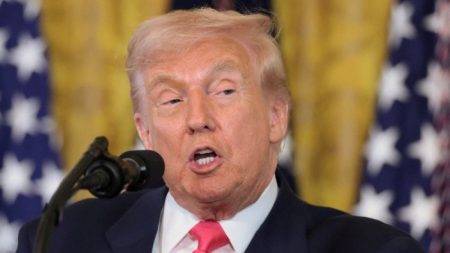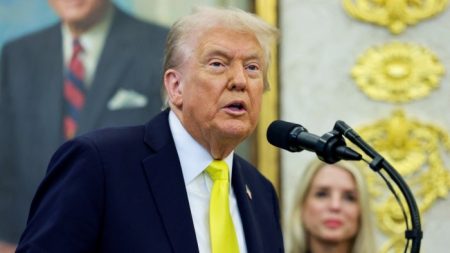Unlock the Editor’s Digest for free
Roula Khalaf, Editor of the FT, selects her favourite stories in this weekly newsletter.
A dramatic rebound in the yen has sent shockwaves across global markets and left the currency on course for its best month this year, setting the scene for further volatility around Japanese and US central bank meetings this week.
The yen has leapt 4.7 per cent against the dollar in July, helped by the possibility that the Bank of Japan could raise interest rates on Wednesday, narrowing the yawning gap with Federal Reserve borrowing costs that had driven the currency to a string of multi-decade lows. Expectations of Fed cuts have also ramped up following a fall in US inflation earlier this month.
The currency’s recovery has been turbocharged by the unwind of popular “carry trades”, where investors borrowed in yen to fund the purchase of higher yielding currencies and had pushed bets against the yen to their most extreme levels for around two decades.
Analysts say that as investors have rushed to cut their losses on misfiring carry trades, they have been forced to sell assets in other corners of markets, adding fuel to a sharp sell-off in global tech stocks.
“The FX market is moving everything right now, because yen-funded carry trades have been one of the most popular trades this year — cutting the positions is affecting other risk positions as well,” said Athanasios Vamvakidis, global head of foreign exchange at Bank of America.
While the yen stabilised on Friday, forex traders say volatility will intensify next week as markets prepare for a knife-edge interest rate decision by the Bank of Japan and adjust to a global shift in risk appetite and the massive unwinding of speculative currency positions.
The predictions, made by traders in Tokyo at three investment banks, came at the end of a week in which the yen surged from ¥157.5 against the dollar to ¥153.71.
But traders also warned that a BoJ decision on Wednesday to leave interest rates untouched could trigger a rapid reversal for the yen, sending it back on course towards the ¥161 per dollar low at which the Japanese authorities are suspected of having intervened in mid-July.
“Things really could get interesting next week for the yen, because the set-up going into the BOJ meeting is very different given that market sentiment towards the carry trade has clearly changed,” said Benjamin Shatil, FX strategist at JPMorgan in Tokyo.
“There are still a lot of short yen positions out there, which could be unwound if we get a move through 152. At the same time, if the BOJ refrains from making any substantial announcement, there might be very little resistance to the yen falling back,” he added.
Traders in swaps markets are evenly split on the prospect of the Bank of Japan lifting its key rate 0.15 percentage points to 0.25 per cent next week, up from a probability of a quarter earlier this month.
Looming over this has been the influence from the US political scene, including comments by Donald Trump that the US had a “big currency problem” because of the weakness of yen and yuan, signalling he might explore different options for weakening the dollar if he wins the presidential election in November.
That has played alongside the heavy sell-off on Wall Street led by tech shares.
“The most crowded fund manager trade had been long tech stocks and in FX it’s been short yen . . . this week has seen the most crowded trades unwind and I’m sure there was some cross over between the two,” said Chris Turner, global head of research at ING.
BoJ-watchers believe that the currency moves have placed the central bank in a difficult position, as the current economic situation appears to justify a small rate increase. If the BoJ decides not to move, said analysts, the market may decide that it has held back because the yen is now stronger, allowing the market to interpret the decision as purely reactive.
“Over the last two years people have made a lot of money shorting yen . . . there will be a bias to jump back in if the BoJ doesn’t lift rates,” said Turner.
Additional reporting by Kate Duguid in New York
Read the full article here













